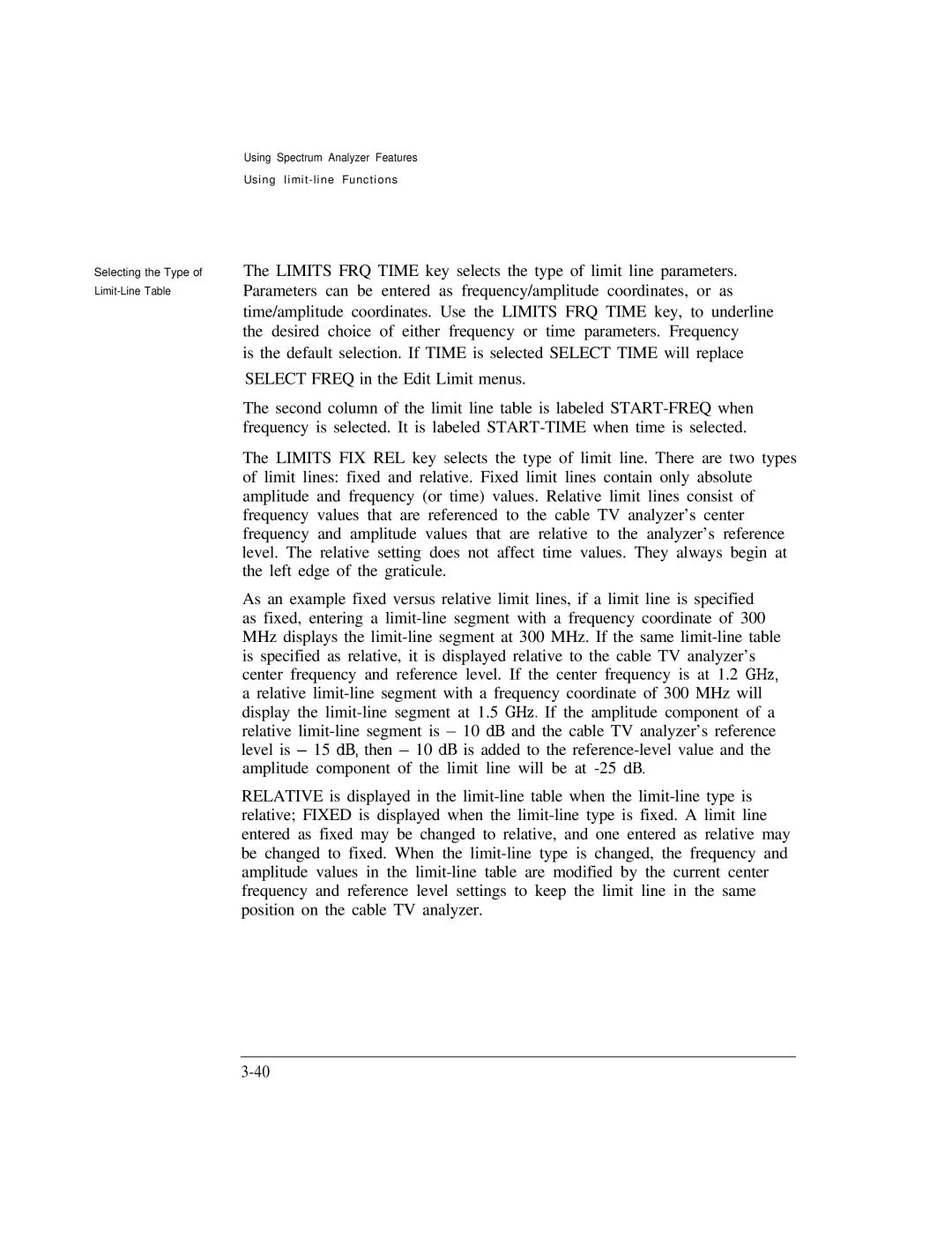
Selecting the Type of
Using Spectrum Analyzer Features
Using limit-line Functions
The LIMITS FRQ TIME key selects the type of limit line parameters. Parameters can be entered as frequency/amplitude coordinates, or as time/amplitude coordinates. Use the LIMITS FRQ TIME key, to underline the desired choice of either frequency or time parameters. Frequency
is the default selection. If TIME is selected SELECT TIME will replace
SELECT FREQ in the Edit Limit menus.
The second column of the limit line table is labeled
The LIMITS FIX REL key selects the type of limit line. There are two types of limit lines: fixed and relative. Fixed limit lines contain only absolute amplitude and frequency (or time) values. Relative limit lines consist of frequency values that are referenced to the cable TV analyzer’s center frequency and amplitude values that are relative to the analyzer’s reference level. The relative setting does not affect time values. They always begin at the left edge of the graticule.
As an example fixed versus relative limit lines, if a limit line is specified as fixed, entering a
RELATIVE is displayed in the
